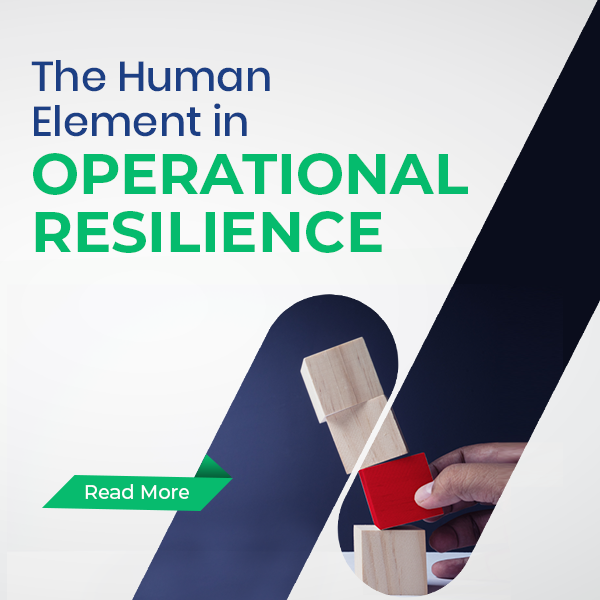
The Human Element in Operational Resilience
Operational resilience has been critical to organisational success, ensuring businesses can withstand and recover from disruptions. Traditionally, the focus has been on technological and in...

Operational resilience has been critical to organisational success, ensuring businesses can withstand and recover from disruptions. Traditionally, the focus has been on technological and in...
Operational resilience has been critical to organisational success, ensuring businesses can withstand and recover from disruptions. Traditionally, the focus has been on technological and infrastructural aspects, but in today’s dynamic and interconnected world, the human element is emerging as a key factor in operational resilience.
The ability of an organisation to foresee, plan for, react to, and adjust to disruptive occurrences is known as operational resilience. Although study systems and technology improvements are important elements, true resilience is built on the human dimension.
A human-centric approach to operational resilience must take into account the role that people play in preserving company continuity. Workers are an organisation’s lifeblood; they are more than just parts of a machine. Their ability to adapt, make sound decisions, and possess emotional intelligence greatly enhances the business’s overall resilience.

Recognizing human vulnerabilities is the first step in addressing them. Stress, fatigue, and uncertainty can affect decision-making and performance. Human errors, often considered liabilities, can also be viewed as opportunities for learning and improvement. By understanding these vulnerabilities, organisations can implement strategies to mitigate their impact.

The benefits of staff training and development extend beyond improving their technical abilities. It involves cultivating a resilient mindset. Training programmes that mimic real-world disruptions can aid in the development of employees’ critical thinking skills, decision-making abilities, and the capacity to adjust to unanticipated events.

An essential component of operational resilience is good and transparent communication. Misinformation and poor communication can make problems worse during times of crisis. Establishing strong communication protocols will help organisations make sure that information moves smoothly at all levels.
Operational resilience is a continuous process rather than a static condition. Fostering open communication, teamwork, and a common dedication to ongoing improvement are all important components of building a resilient culture. Resilient workers are more likely to show resilience in the face of difficulties if they feel appreciated and supported.
Automation can handle routine tasks, allowing humans to focus on complex decision-making and strategic planning. Integrating technology that enhances communication and facilitates remote collaboration further strengthens the human element.
Cyber risks provide serious obstacles to operational resilience in the digital age. It is essential to comprehend human behaviour in the context of cybersecurity. To ensure that the human element continues to be a strong line of defence against cyber risks, employee awareness programmes, cybersecurity training, and the development of a security-conscious culture can strengthen defences against cyber attacks.
KeyTakwaway
Organizations must embrace the human aspect of operational resilience as they negotiate a constantly changing terrain of problems. The capacity of an organisation to endure setbacks and bounce back is greatly enhanced by the adaptability, creativity, and emotional intelligence of its members. Through the prioritisation of cultivating a resilient culture, the allocation of resources towards employee well-being, and the smart use of technology, enterprises may establish a robust foundation that not only endures hardships but flourishes in the face of misfortune. The most resilient fabric in the complex tapestry of operational resilience is, after all, woven by human strands.
Our resilience management platform, “AutoResilience“, is industry-leading and has four modules for risk, crisis, business continuity, and cyber resilience. Recognized by analysts like Gartner and Forrester, we’ve helped numerous banks globally reduce the impact of disruptions, ensure regulatory compliance, and safeguard reputation.
GET IN TOUCH